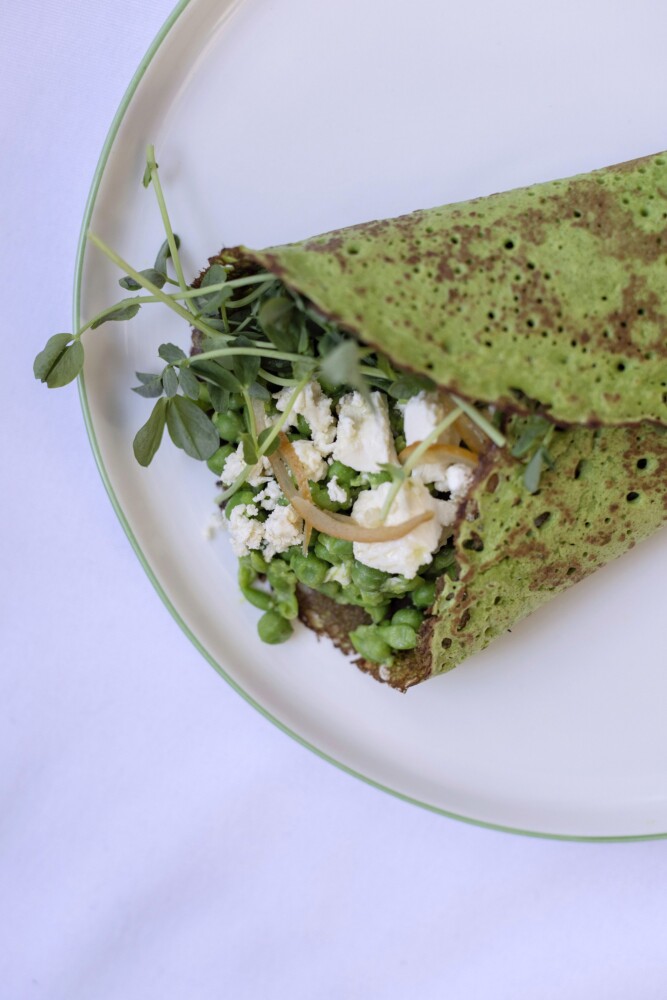It may still be a dull muddy brown outside in Maine, but inside many farmers’ high tunnels, it’s a bright spinach green. According to Bowdoinham farmer Ben Whatley, the last two weeks of March are prime spinach time for Maine locavores.
Yes, spinach grows in the ground all winter in Maine with the help of these unheated polyethylene-covered structures. High tunnels extend the natural growing season for cold weather crops such as hearty greens because the plastic lets in the sunlight to keep temperatures comfortable for the plants under the structure while protecting them from frost, sleet and snow.
But we all know daylight hours are truncated at this latitude during winter. Whatley says spinach, therefore, grows slowly and smaller between the dark days of late November and early March. And supplies sell out quickly, at premium prices, at winter markets.
But once daylight hours inch over the 11-hour mark in early March, spinach grows like a weed, and farmers need to pick it before it bolts. “The last two weeks of March is the perfect time for Mainers to eat a lot of spinach!” says Whatley, adding that is when he’ll start bagging his organic spinach in larger quantities at a better price.

Fresh local spinach. The height of its high-tunnel season is now. Brianna Soukup/Staff Photographer
BINGO!! I love spinach. The bright color, fresh taste and high water content attract me in equal measure. The color matches my eyes, and it also brightens most things you blend it into.
Where a kale smoothie seems a bitter tonic, a spinach one is fresh and bright. One hearty spinach leaf will hold its crunch in a turkey sandwich packed in the morning but not eaten until lunch. Any wintertime pesto I make is at least half spinach because even after it’s mixed with hot pasta, it won’t oxidize into an unappealing black paste. Spinach processed into crepe batter is strikingly pretty, and it adds lots of vitamin A, C and K, iron, folate, potassium and dietary fiber, but just three calories per serving.
Amp up chicken noodle soup with a handful of chopped spinach, added after you turn off the burner to soften in the residual heat of the broth. My meat-filled lasagna typically gets a layer of fresh spinach, too, because the water released as it cooks helps soften the no-boil noodles I use. Roasted root vegetables become infinitely more colorful and moister when the hot carrots, sweet potatoes and rutabagas get tossed with a squeeze of lemon juice and a handful of fresh spinach, just to wilt.
So take a leap and buy that big bag of spinach your farmer is selling this week and next. Hold off washing it until just before you use it, and local spinach will hold in the fridge for 7-10 days, giving you lots of chances to add it to meals in ways you hadn’t thought of before.
Local foods advocate Christine Burns Rudalevige is the editor of Edible Maine magazine and author of “Green Plate Special,” both a weekly column about eating sustainably in the Portland Press Herald and the name of her 2017 cookbook.

Assembling the chickpea and spinach crepe. Could a dish look more like spring? Brianna Soukup/Staff Photographer
Spinach and Chickpea Crepes with Mashed Peas, Preserved Lemons and Feta
These protein-packed crepes are versatile. Fill them with any combination of savory ingredients, from cheese and eggs for breakfast to leftover roast chicken and vegetables for dinner. Store the crepes, covered, in the refrigerator for up to 4 days or freeze them for up to 2 months. Let the crepes come to room temperature before using.
Makes 8 crepes
2 cups (6 ounces) chickpea flour
2 cups milk
2 eggs
2 cups (2 ounces) tightly packed raw spinach, washed
Small bunch (1 ounce) parsley
1 teaspoon lemon zest and 1 tablespoon juice
Kosher salt
Ground black pepper
Olive oil for frying
1 ½ cups (1-pound bag) frozen peas
2 tablespoons unsalted butter
Peel from 1 preserved lemon, very thinly sliced
4 ounces marinated feta cheese, crumbled
Pea shoots, to garnish
Combine the chickpea flour, milk, eggs, spinach, parsley, lemon zest and juice, and 1/2 teaspoon salt and ¼ teaspoon pepper in a blender container and process until very smooth.
Heat 1 teaspoon of oil in a 10-inch nonstick skillet pan over a medium heat. Add a scant 1/4 cup of the batter to the pan. Swirl the pan around so the batter covers the bottom. Cook until the top is full of bubbles, the edges lacy and crisp, about 3 minutes, and use a large spatula to flip the crepe in the pan. Cook for 30 seconds more, then transfer the cooked crepe to a warm plate. Repeat to use up the rest of the batter, adding a little more oil each time. Stack the crepes on a plate, separating each from the next with parchment paper.
Place the peas in a small saucepan. Cover them with water. Place over medium high heat, bring to a boil and cook for 2 minutes. Drain the peas, add the butter and use a potato masher to squish the peas slightly. Season with salt and pepper to taste.
Assemble the crepes by filling each with some of the mushy peas, preserved lemon slivers, feta crumbles and pea shoots. Serve warm.
Send questions/comments to the editors.


